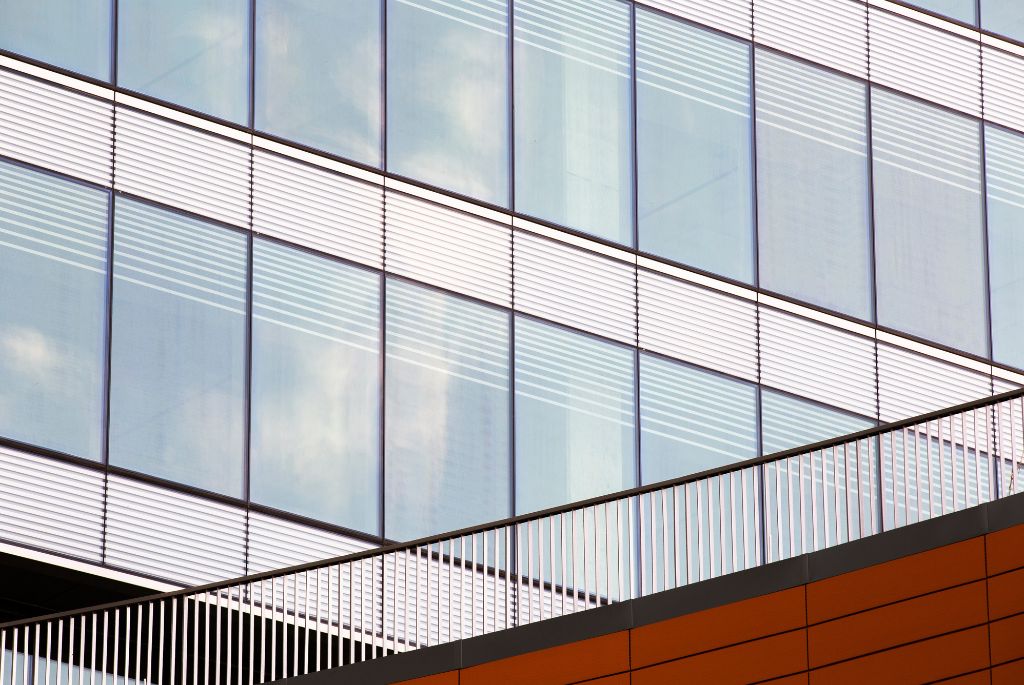Go to any contemporary high-rise and you can be assured that you will find dazzling surfaces, structures that breathe, and lightweight designs, which appear to be daring and light at the same time. Many of these designs are achieved by the trick of curtainwalling: the elegant skin envelops the structures and unites the strength, performance, and style. Aluminium curtainwalling is usually seen as an intelligent and progressive solution to architects, developers and builders working in climates in which it is important to design and also make a building work efficiently.
Lightweight but Strong: The Structural Advantages of Aluminium Curtainwalling
The strength-to-weight ratio of aluminium curtainwalling is one of the most convincing arguments to pick this type of façade system. Aluminium is also very lightweight in nature compared to steel or concrete. This implies a reduced burden on the building structure, decreased foundation specifications, and, in most cases, simpler transportation and installation.
With a robust aluminium curtainwall frame, it takes heavy glazed panels but allows the weights to be controlled. Big sizes of panels can be used without compromising structural performance. In addition, aluminium is corrosion, rust, and robust material, and thus, it is most applicable in harsh environments; sun, sand, salts, moisture, and so on, in most construction sites of the modern world.
Maximizing Energy Efficiency Through Insulated Curtainwall Systems
Energy efficiency is no longer a choice, but a necessity. Uninsulated facades make buildings consume cooling energy, particularly during hot conditions. A well-designed aluminium curtainwalling system can include thermal breaks, insulated glass, and engineered seals to minimize heat conduction.
Low Maintenance and Long Lifespan: The Durability of Aluminium Curtainwalls
A building is supposed to last, and this is where durability is vital. Aluminium curtainwalling is low maintenance as opposed to other facade types. Aluminium does not rot, warp, or degrade as most metals or materials do. It is resistant to weather, UV radiation, and to corrosion when properly coated, that is, powder coated or anodized.
Cleanliness is simpler, too. The glass panels can be cleaned periodically; to achieve its aesthetic appeal. A curtainwalling system installed correctly may last in the long term (fifty years or longer) with little maintenance.
Design Versatility and Customization Options for Architects and Developers
The flexibility of the design possibilities is another reason why aluminium curtainwalling would be attractive. Large spans of glass, various shapes, curtain wall systems that incorporate doors or operable windows, sun shading, and louvers can be manipulated by architects. There is a lot of creative space in the visual effect of continuous glass, or alternating patterns of solid and glazed panels.
The character is given by the use of varying depths of frame, materials, and finishes – smooth minimal profiles through to exaggerated mullions. The aluminium curtainwalling products by Koemmerling enable the designers to specify finishes, color choices, and glazing choices to suit functional needs (solar control, glare, privacy) and aesthetics. Curtainwalling has given modern architecture the flexibility in design that is required because the high-rise commercial towers, mixed-use block, and even high-end residential facades are designed to be beautiful.
Why Aluminium Curtainwalling Is a Cost-Effective Solution in the Long Run
Although the initial cost of installing aluminium curtainwalling might be higher than the simple facade choices, the price in the long term is likely in its favor. Here’s why:
- Energy Savings: According to the mentioned notes, efficient curtainwall systems save on heating and cooling. This reduces operational costs throughout the building’s lifetime.
- Less Maintenance and Repairs: Aluminium does not experience most of the problems that are characteristic of other materials (rot, rust, warping). The savings would be fewer failures and easier maintenance.
- Longevity and Asset Value: Superficiality that remains aesthetically pleasing and structurally functional adds up to property worth. Developments that have attractive exteriors usually fetch a higher rent or sales price.
- Compliance and Future Proofing: In most areas, stricter efficiency and facade performance codes have already been implemented. High-quality curtainwalling through investment will place a building in a situation that satisfies these requirements without incurring retrofit or performance penalty.
Bringing It All Together
It is not merely beauty required in modern architecture. It involves performance, durability, sustainability, and long-term value. All these fronts are fulfilled by aluminium curtainwalling. It provides light intensity, enhanced power functions, life span, design versatility and economic effectiveness in project life.
When it comes to project teams that are thinking about the possibility of using curtainwalling, particularly with pre-designed frames and profiles like the ones mentioned above, it is possible to make smarter decisions with the knowledge of the advantages of a curtainwalling. Considering design objectives, environmental considerations, and maintenance concerns over the long term, it becomes obvious why many contemporary projects are inclined to use aluminium curtainwalling as a preferred option for the facade.

